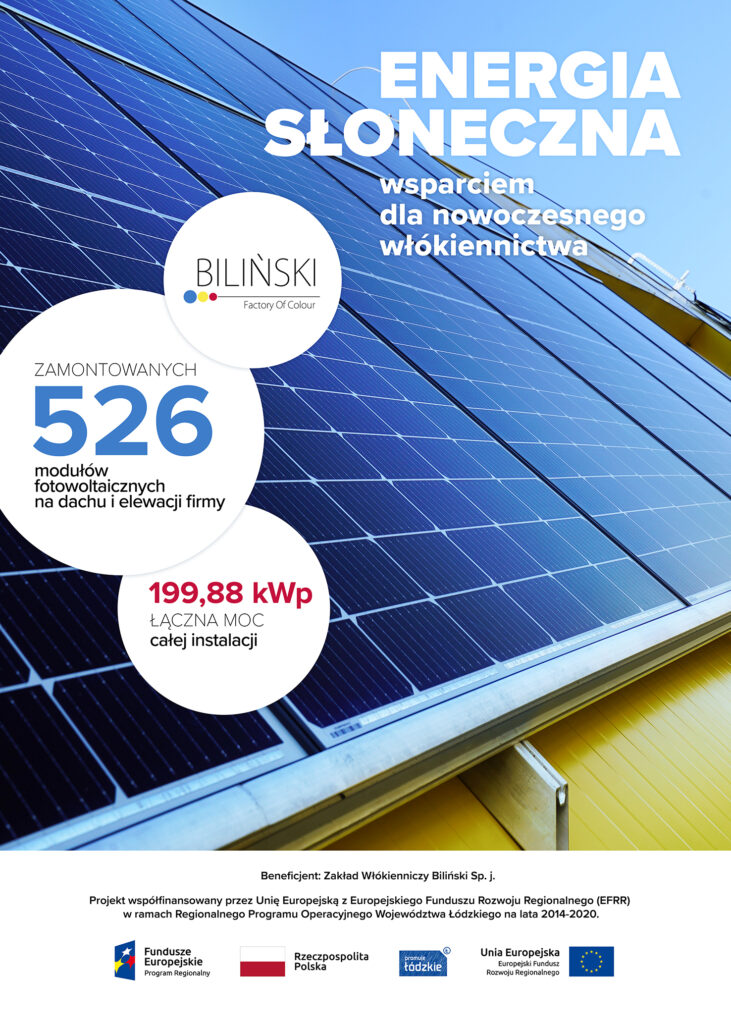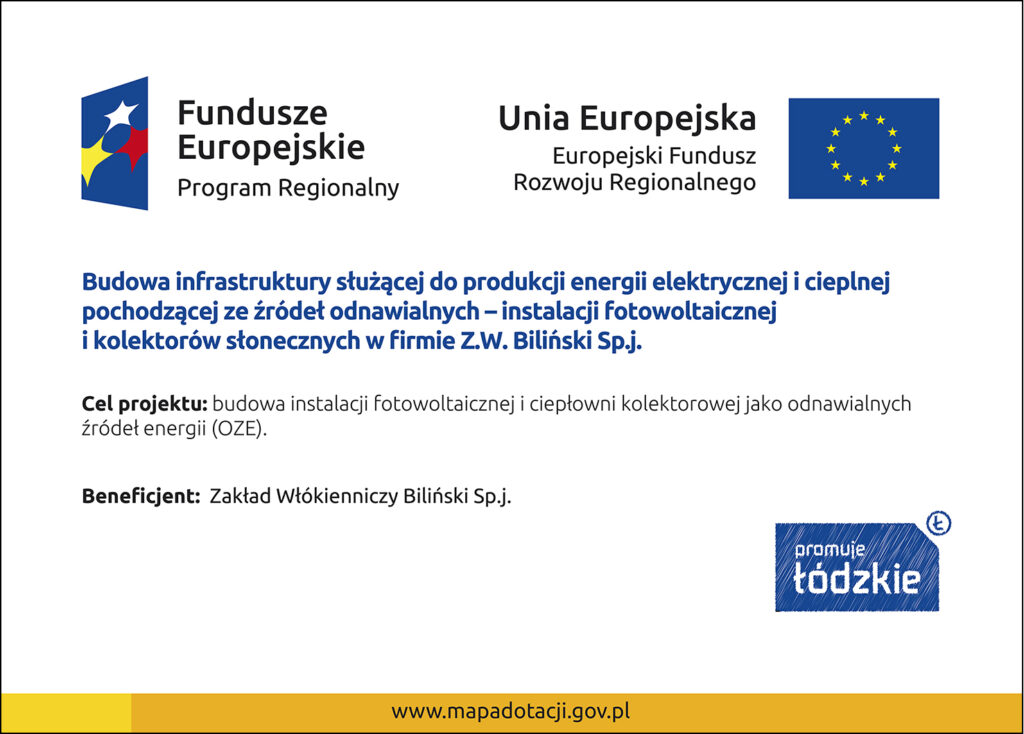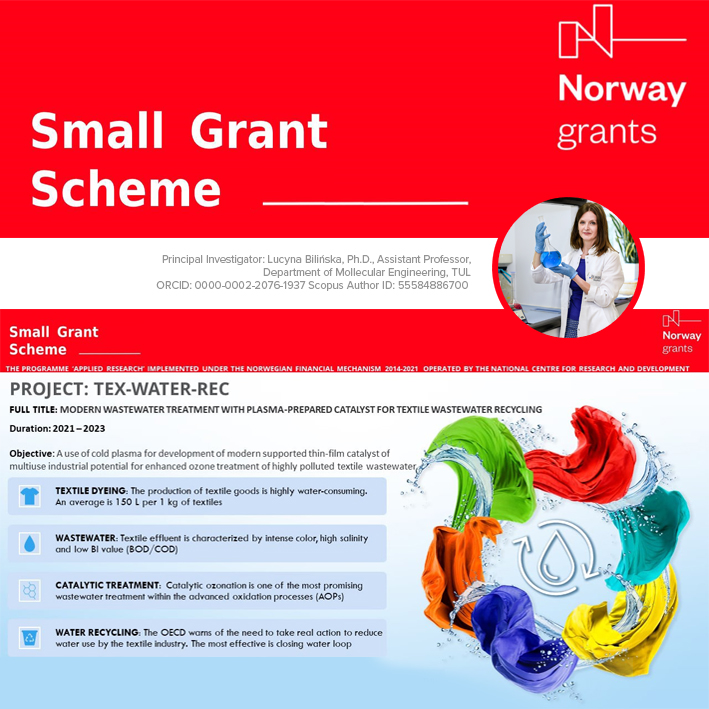We are pleased to announce the completion of a project under the Regional Operational Program of the Łódź Voivodeship for the years 2014-2020, concerning the construction of infrastructure for the production of electric and thermal energy from renewable sources (Measure IV. I Renewable energy sources, Sub-measure IV 1.2.)
Thanks to funding from the European Union, 526 photovoltaic modules were installed on our roof and parts of the building’s façade. The total capacity of the entire installation is 199.88 kWp.
This investment will allow us to achieve our main goal of producing electric and thermal energy from renewable sources, directly from solar radiation. This is another step in improving the company’s infrastructure and production processes in order to even more comprehensively implement the assumptions of the circular economy.



